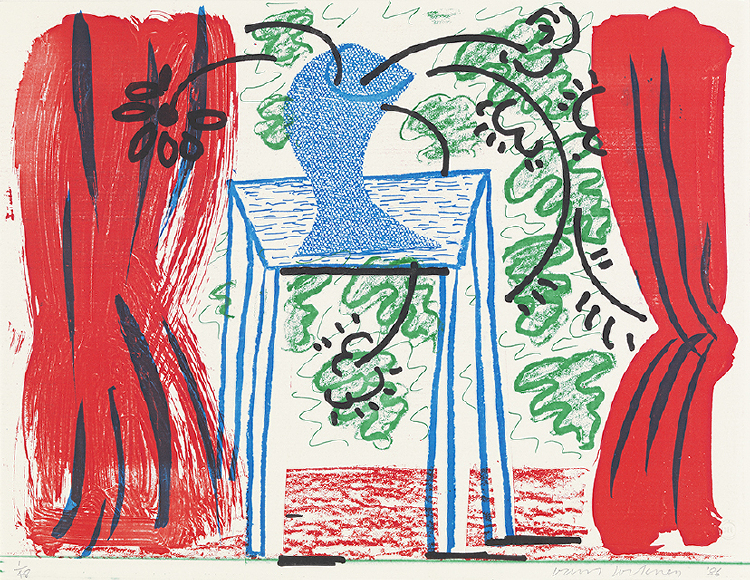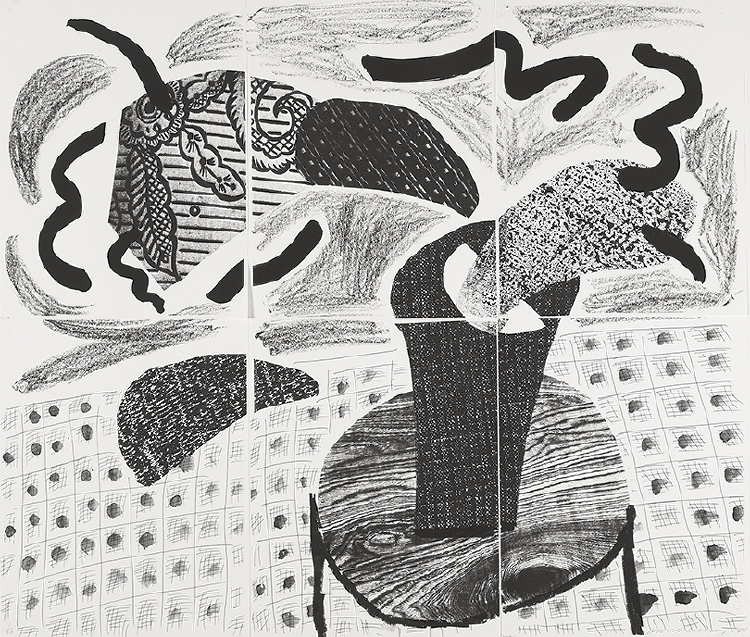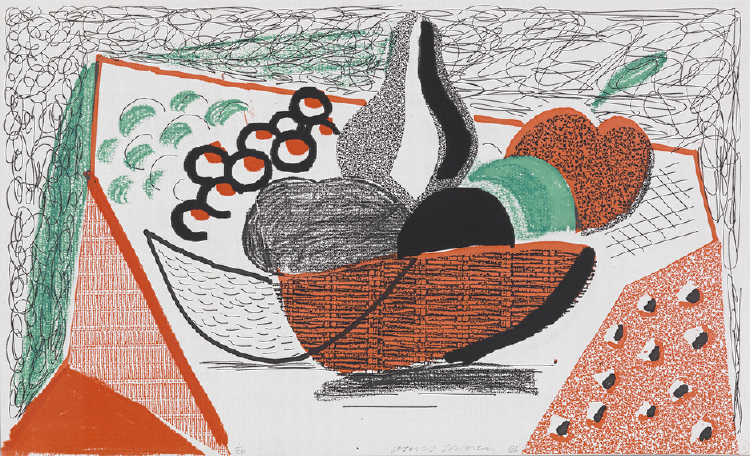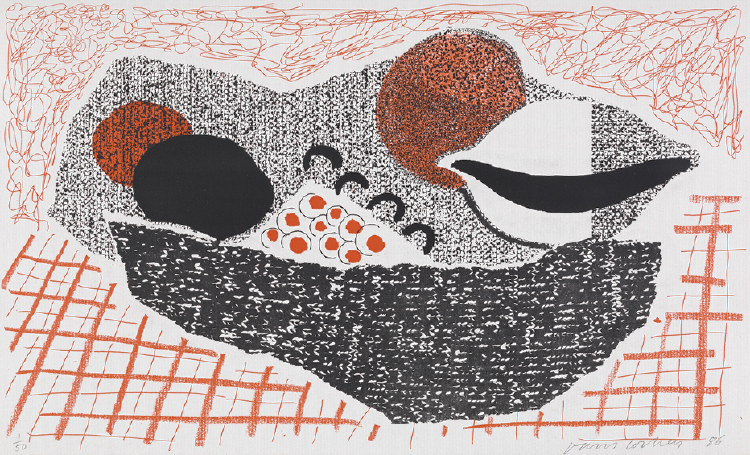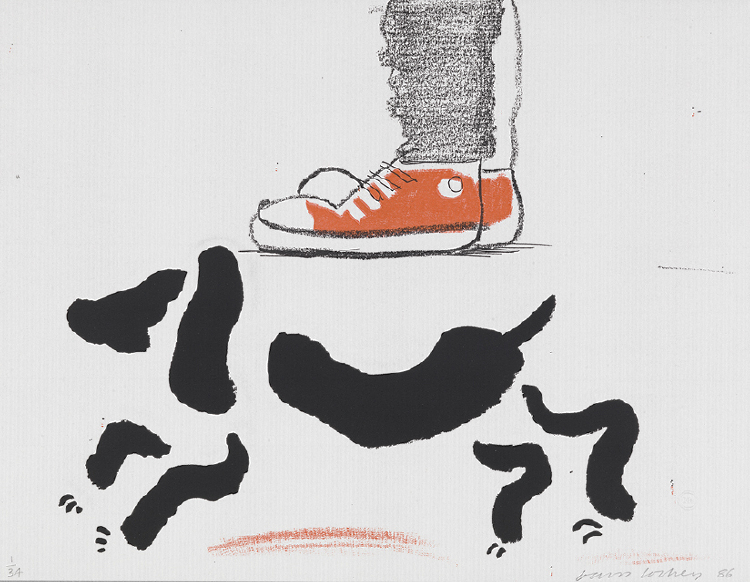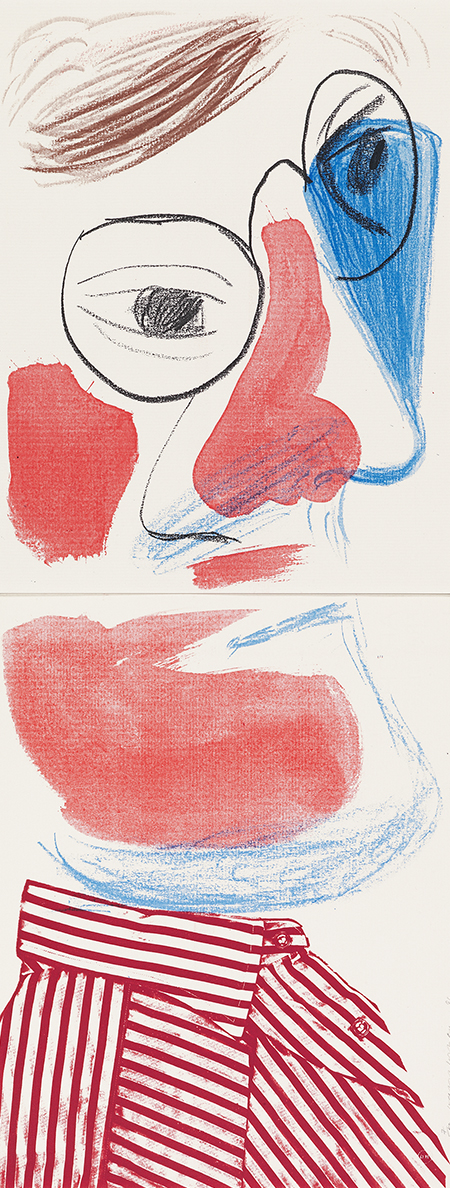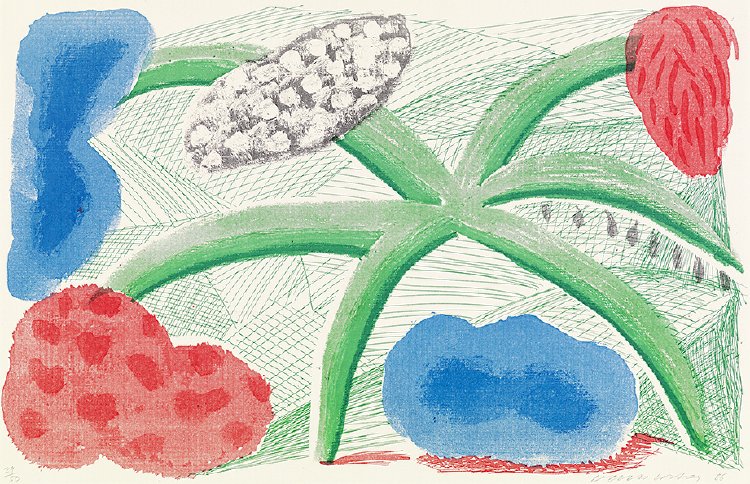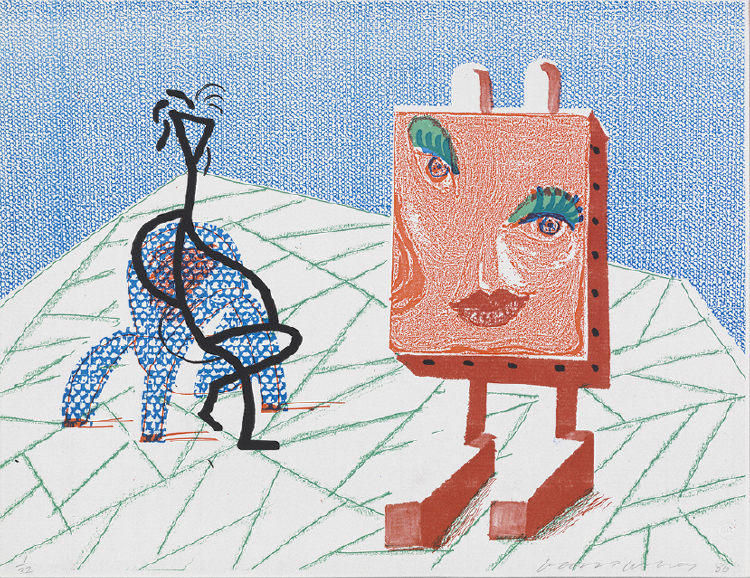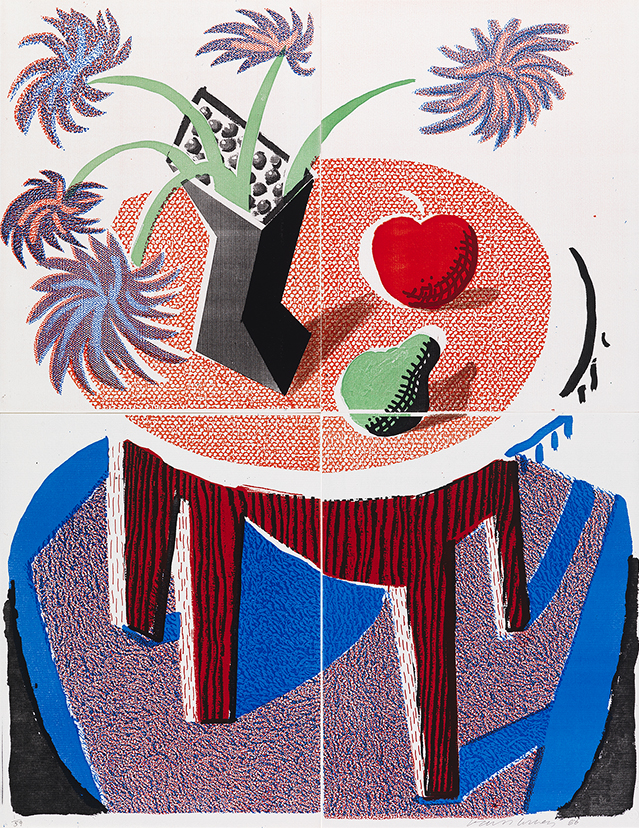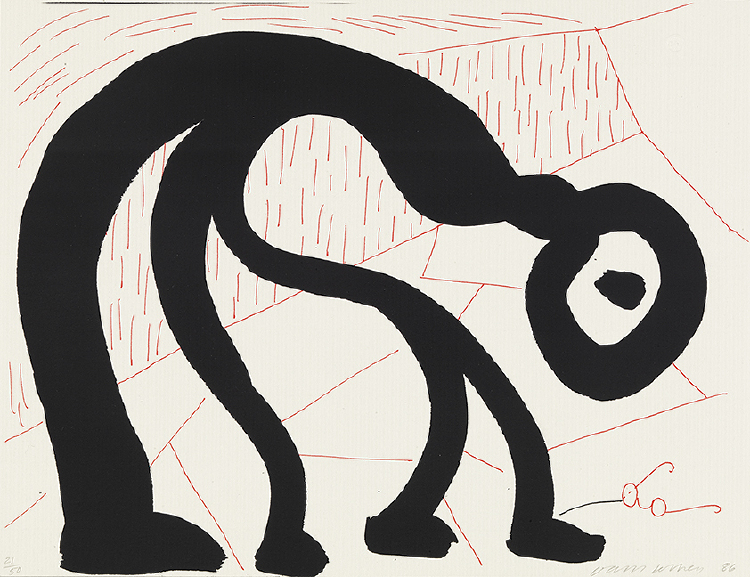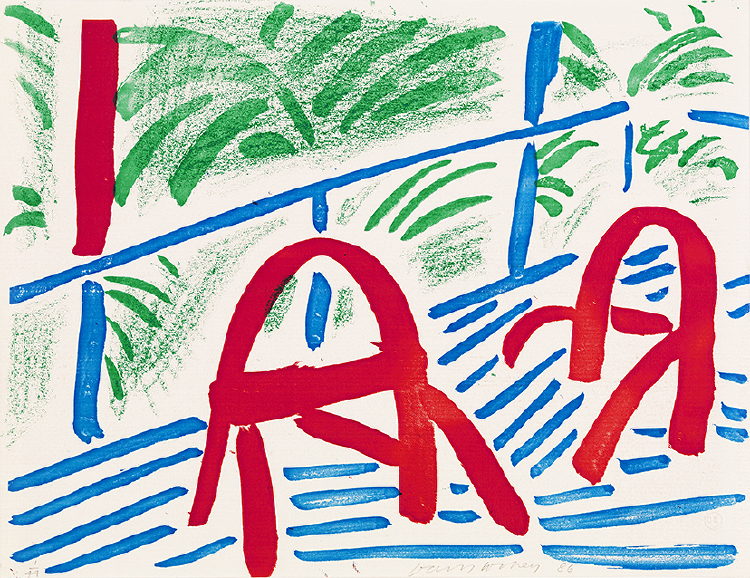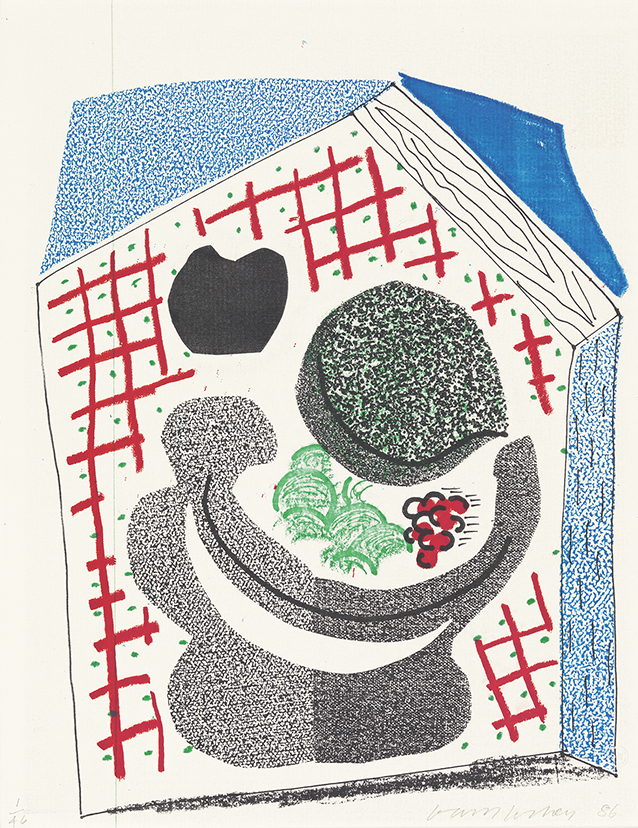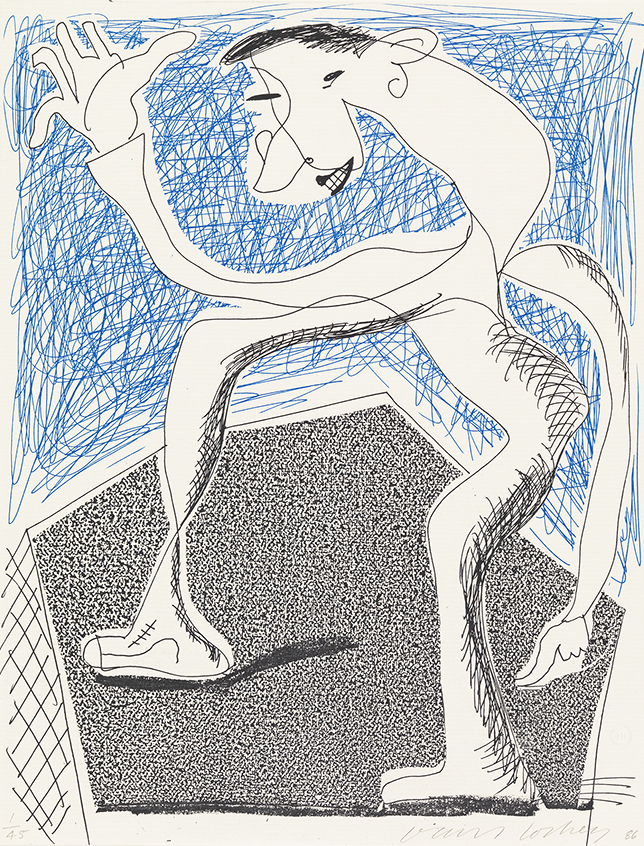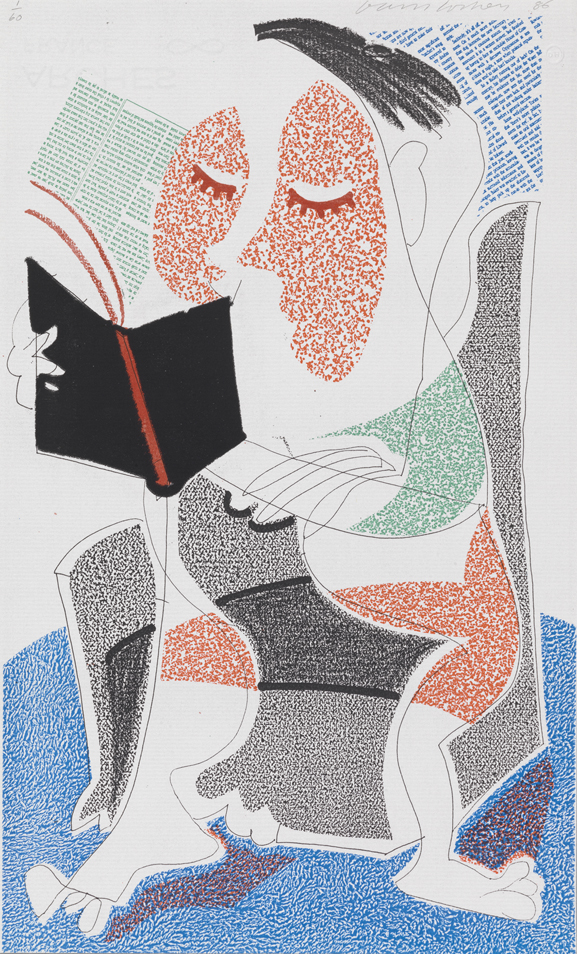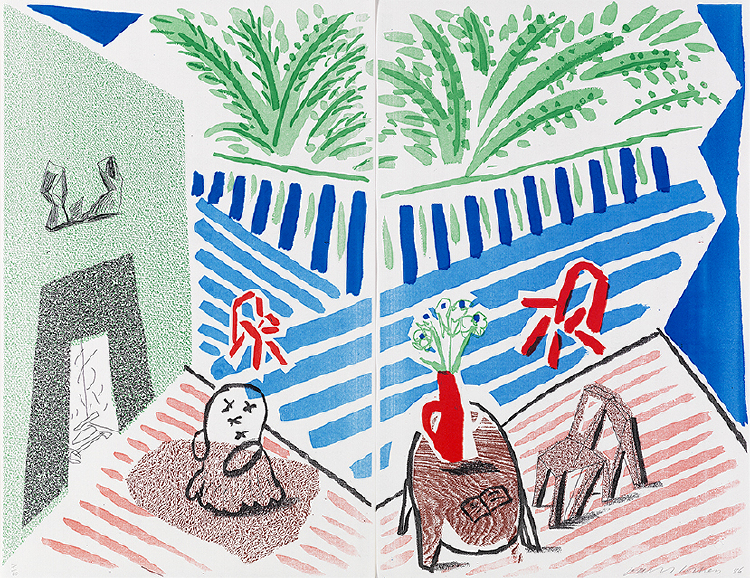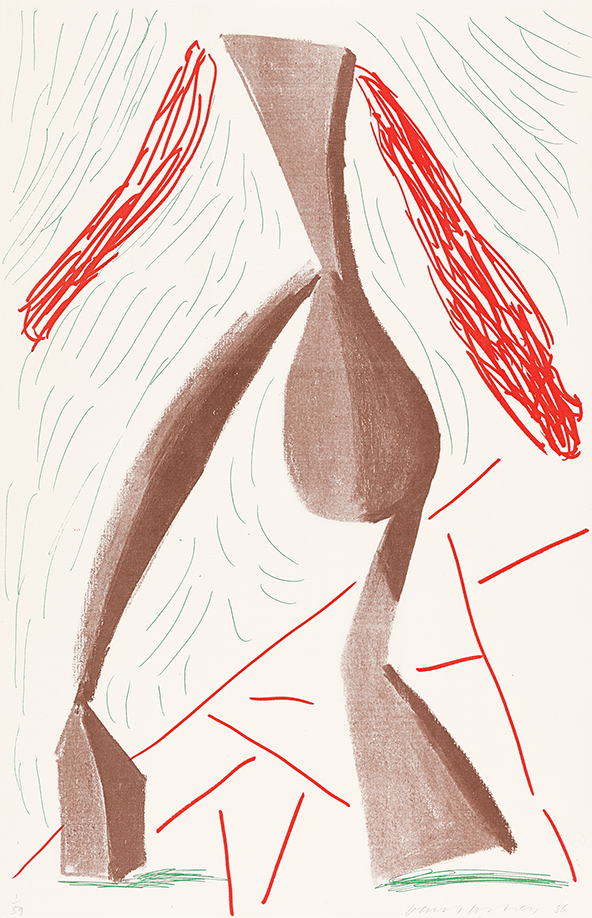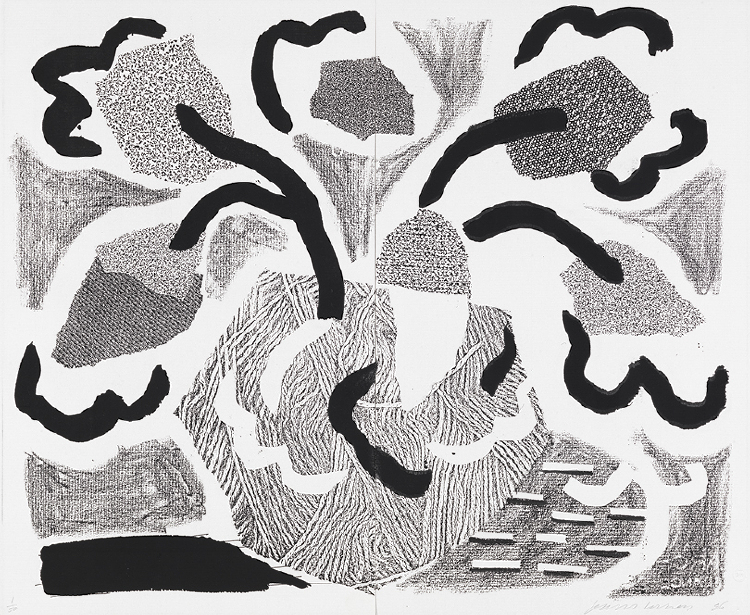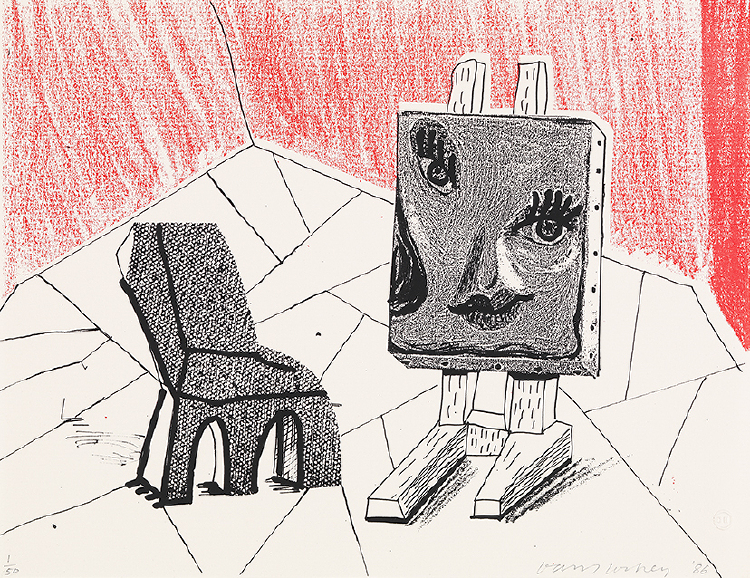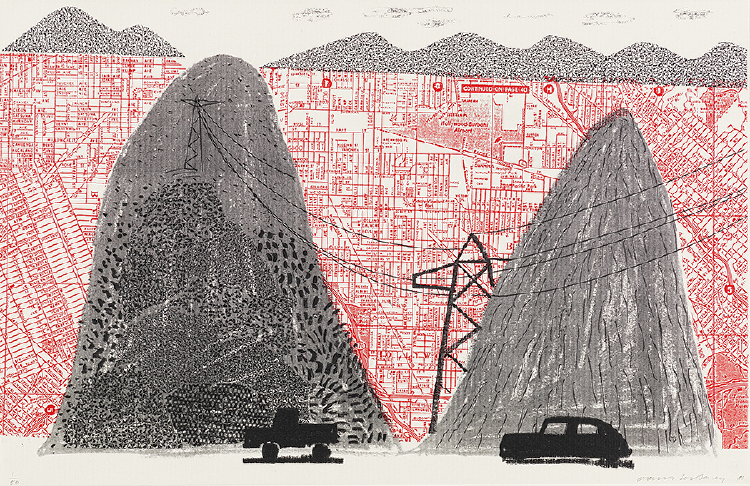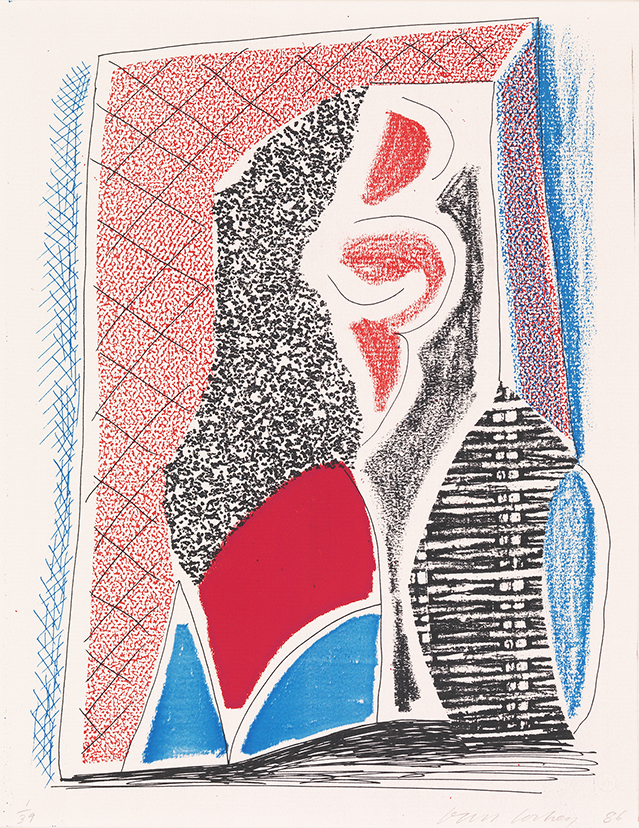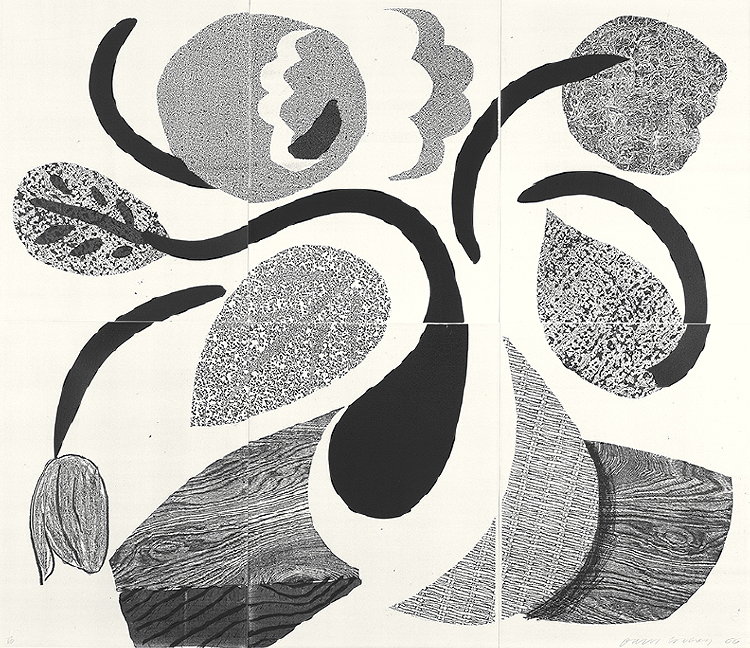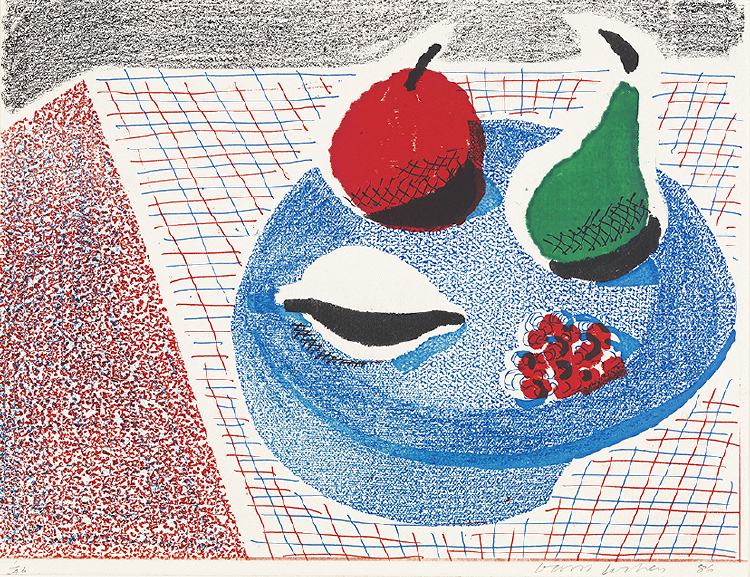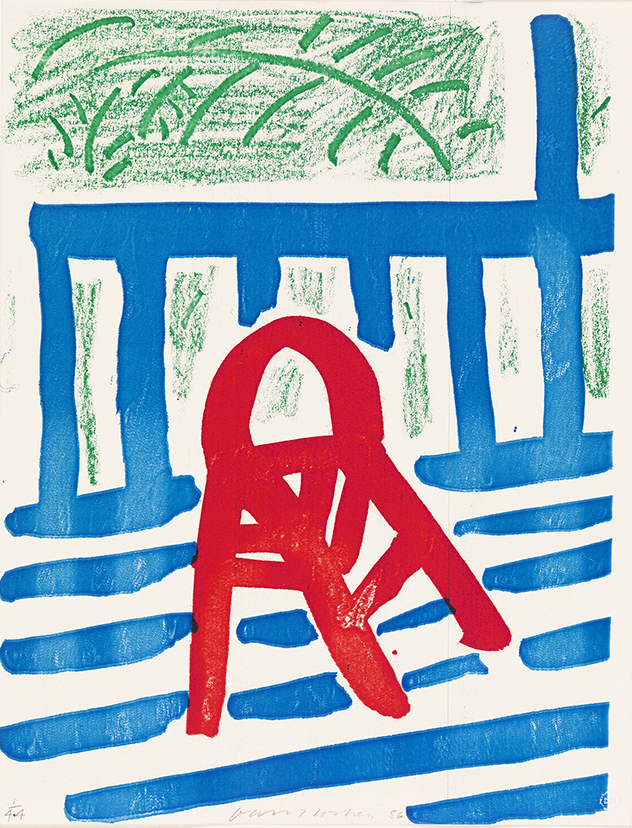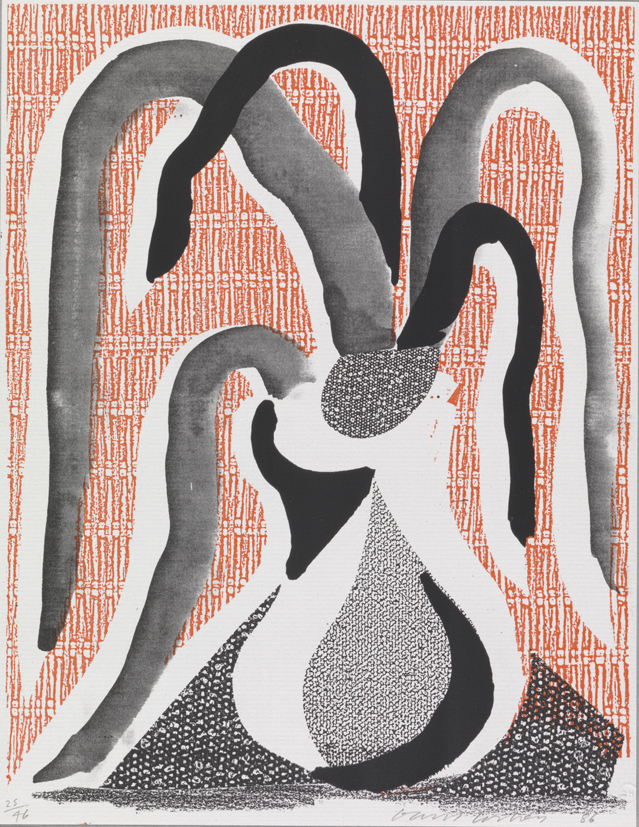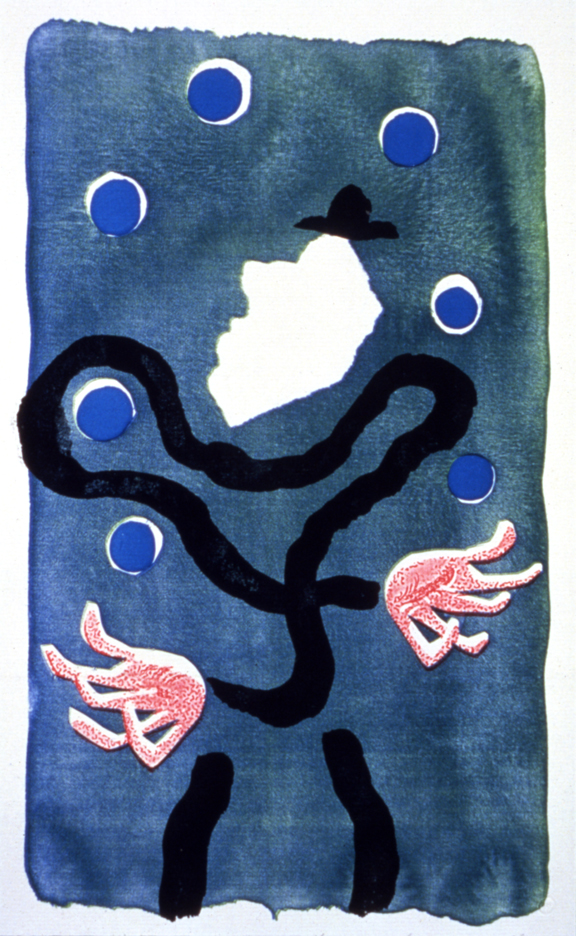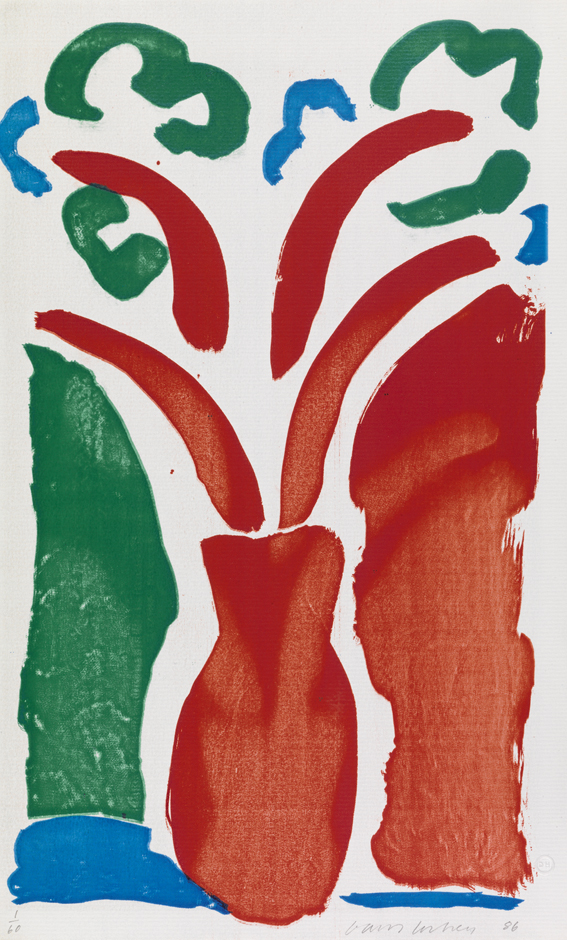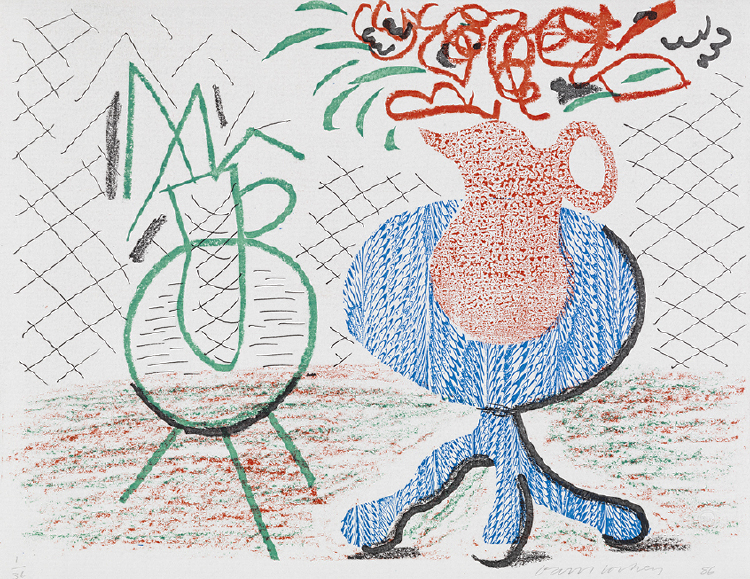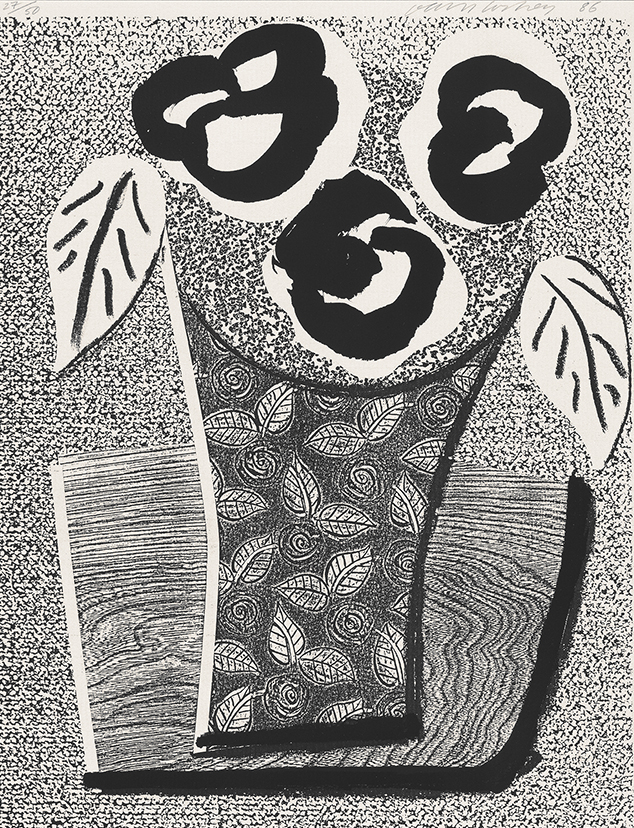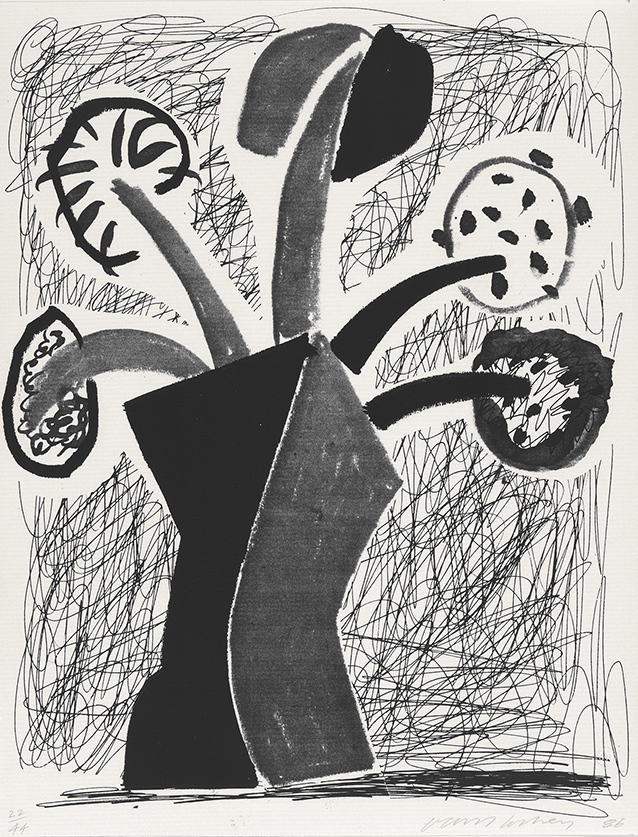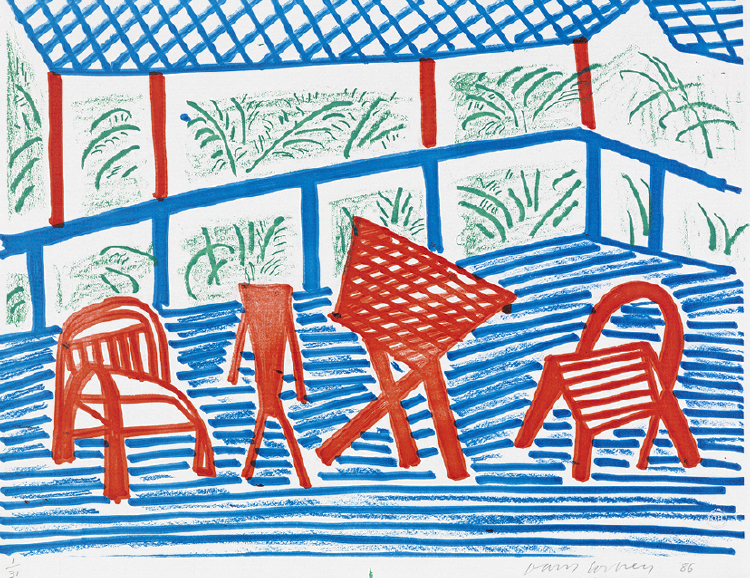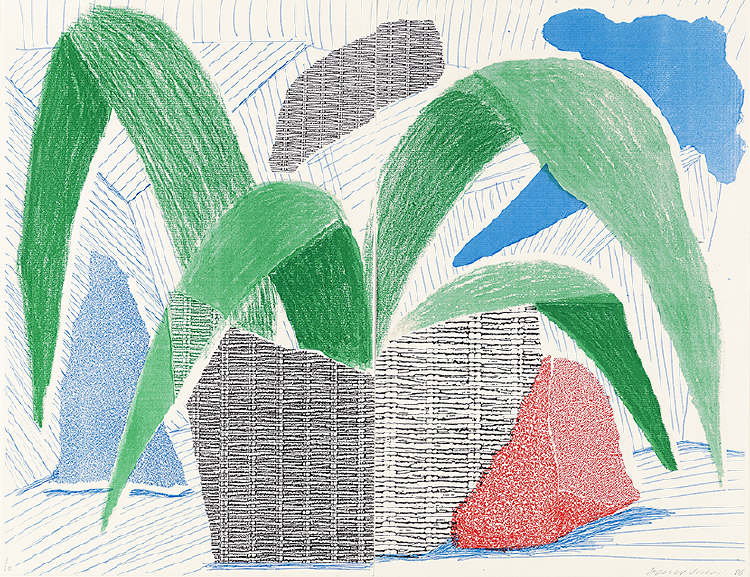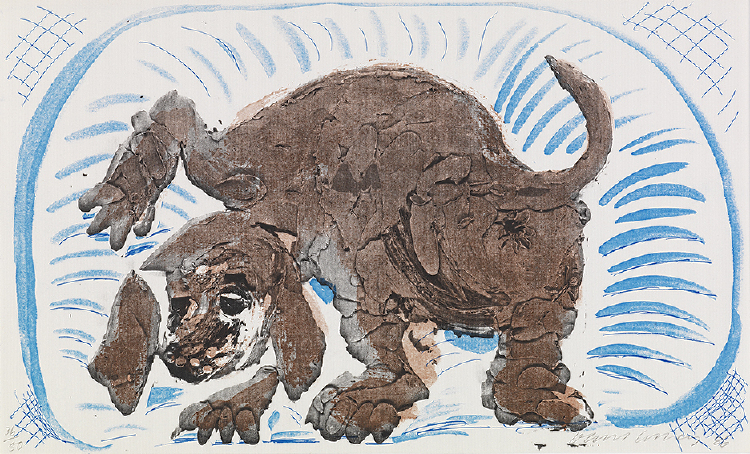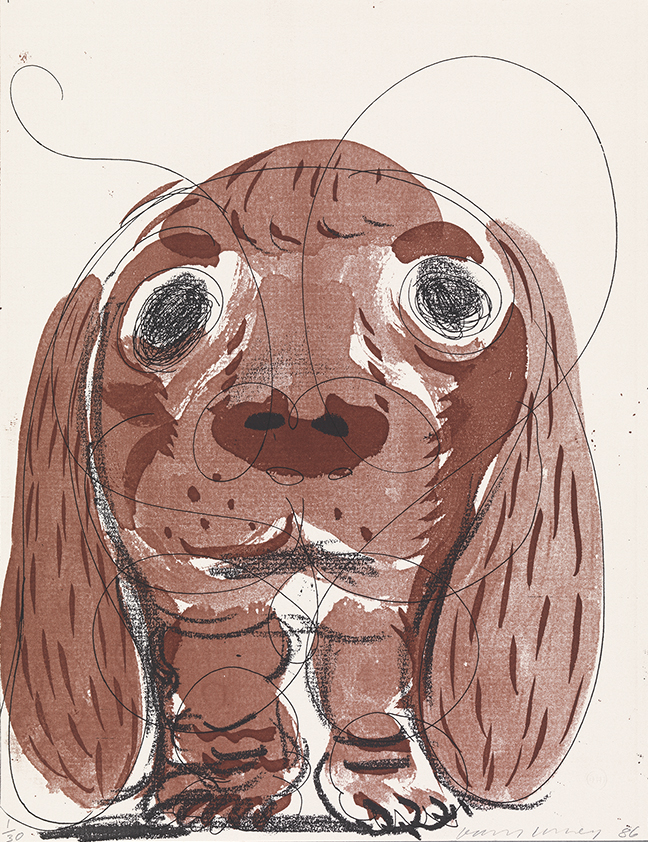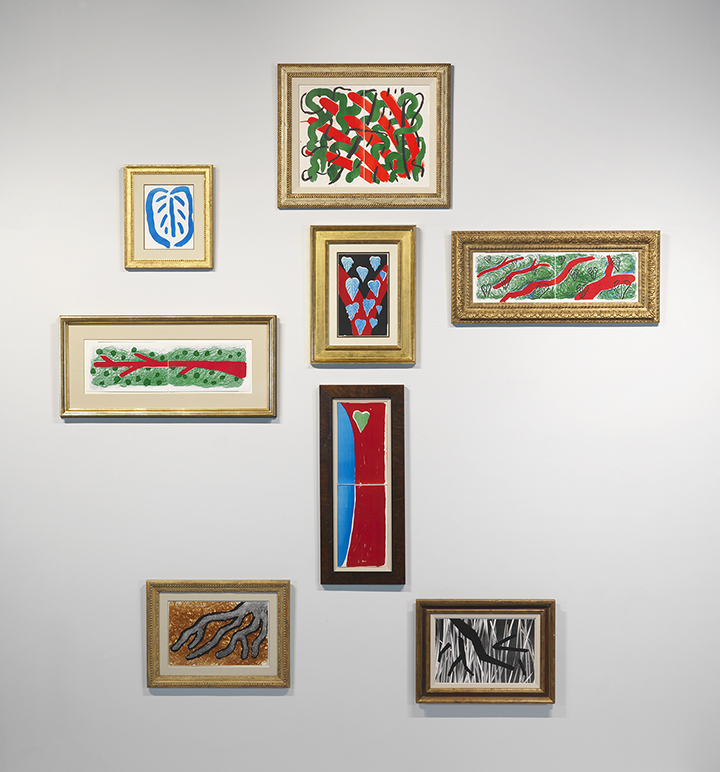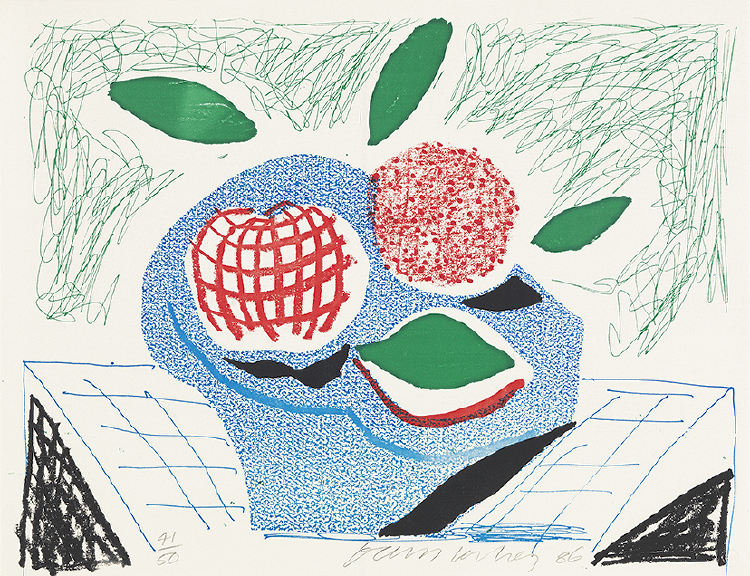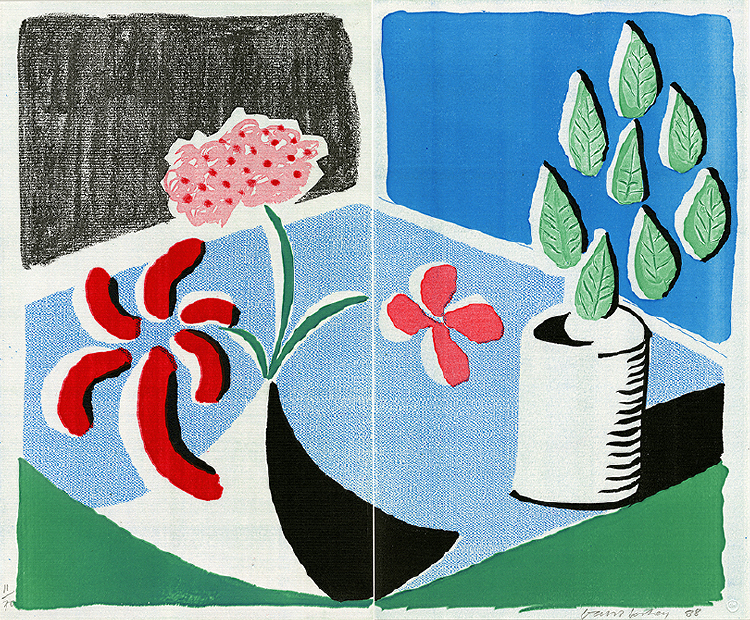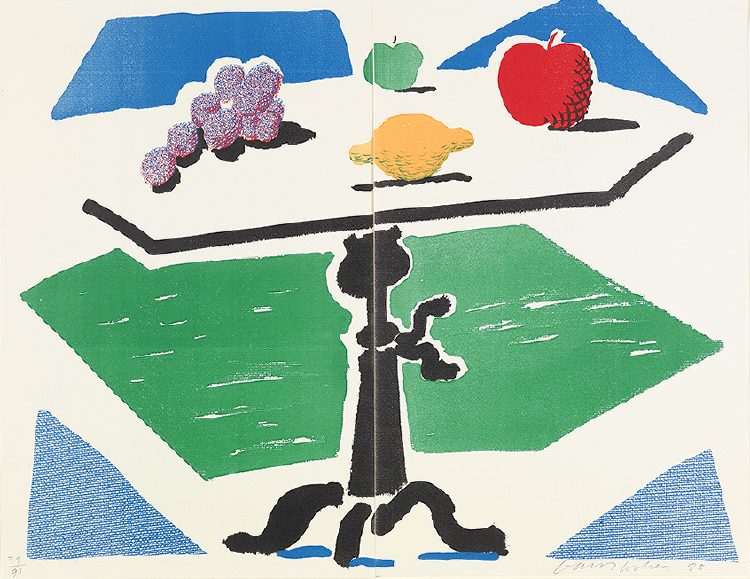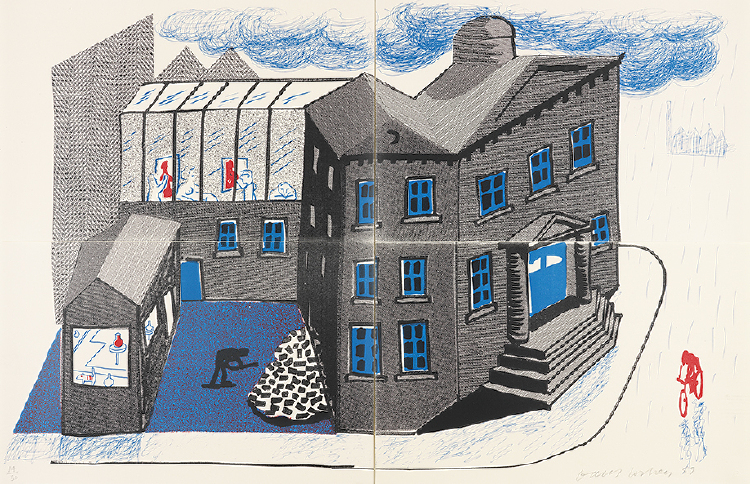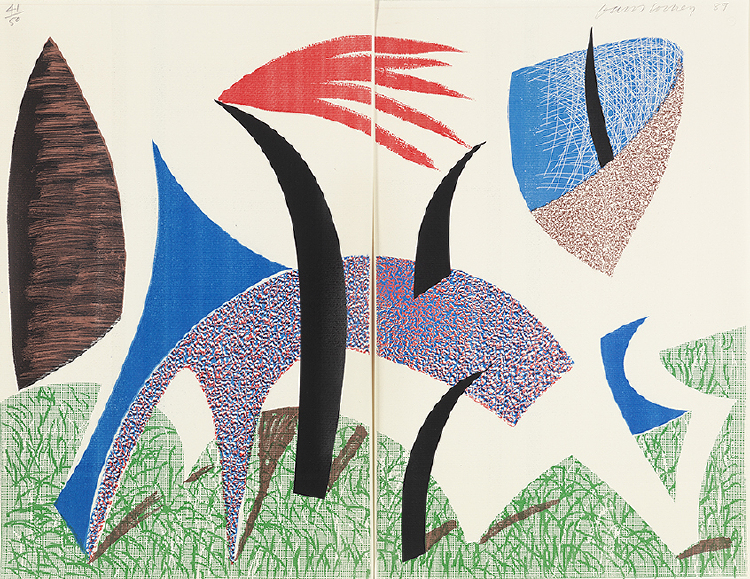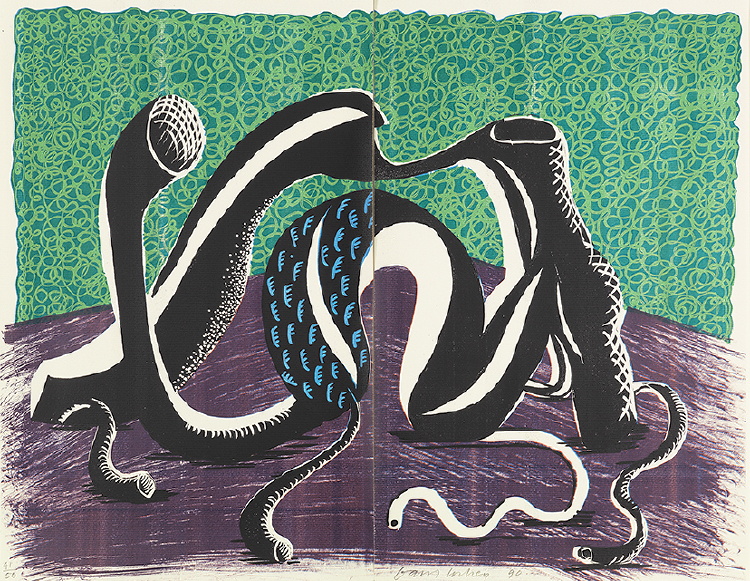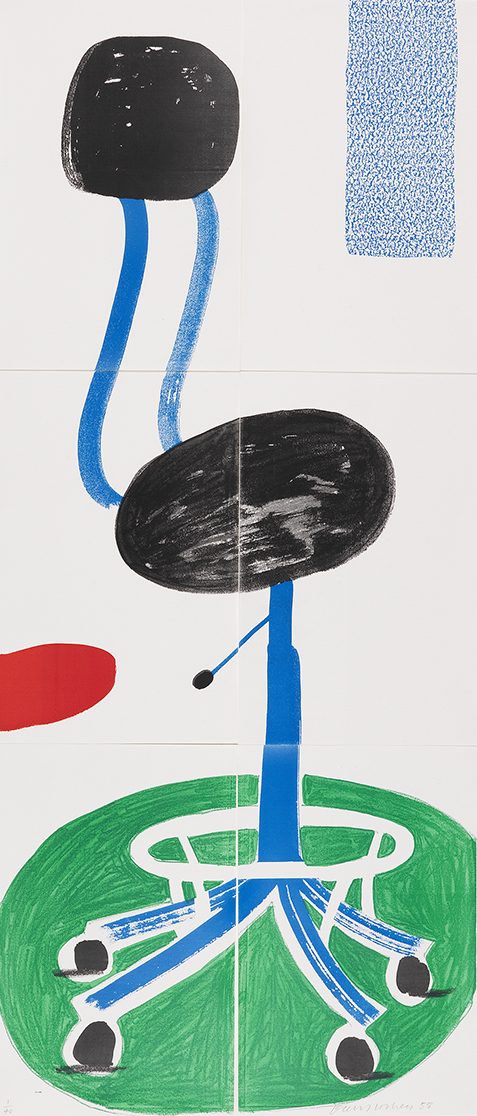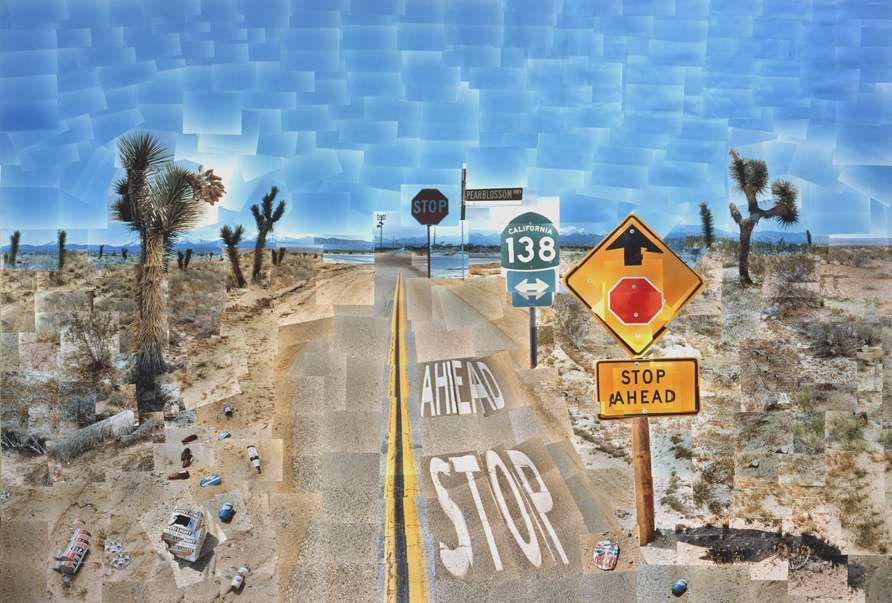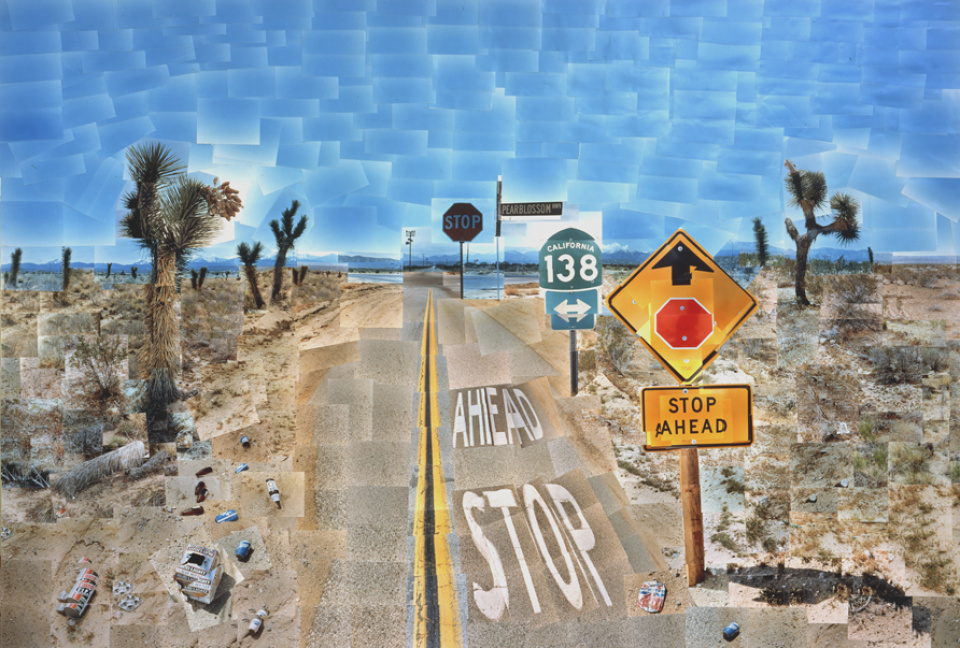
Home Made Prints
It occurs to Hockney to take on an unconventional printmaking machine in the context of art, the office photocopier, in order to produce layered images much like lithographs. With speed and efficiency, he can switch different colored ink cartridges, reduce or enlarge the scanned image, repeat parts, and “photograph” objects on the scanning bed—all without needing an assistant. From [NESTED]his “Home Made Prints” he designs and publishes a catalogue available for sale at his gallery exhibitions.
Over the years I’ve made a lot of prints working with several different master printshops. It’s an exciting process, but I’ve always been bothered by the lack of spontaneity: how it takes hours and hours, working alongside several master craftsmen, to generate an image. How you’re continually having to interrupt the process of creation from one moment to the next for technical reasons. But with these copying machines, I can work by myself—indeed you virtually have to work by yourself; there’s nothing for anyone else to do—and I can work with great speed and responsiveness. In fact, this is the closest I’ve ever come in printing to what it’s like to paint: I can put something down, evaluate it, alter it, revise it, all in a matter of seconds.
One of the first things I did was to use the reduction feature. I did a drawing and then reduced it. Every time I reduced it, I added to the drawing. Something that began big eventually became tiny and was placed off in a corner of the paper. I thought that was amusing. And then when I found out you could swap the color about I started playing with that. I then realized how the machine sees.
Pearblossom Highway
The complexity of Hockney’s photographic collages culminates in an image of the Mojave Desert, Pearblossom Hwy., 11–18th April 1986, #1. It takes him a week to shoot the hundreds of photographs of a juncture in the road, blazing blue sky, distant mountains, and a few pieces of scattered trash. Though the work was commissioned by Vanity Fair to illustrate a story by Gregor von Rezzori, it outgrows that premise and never appears in the magazine. Hockney goes on to make Pearblossom Hwy., 11-18th April 1986, #2, using 4 by 6 inch prints rather than 3 1/2 by 5; it debuts in September at the International Center of Photography in New York. Andy Grundberg writes in the New York Times: “The subject is to some extent a metaphor [NESTED]for Hockney’s photocollages, for they are about the intersection of painting issues with photographic ones, and the intersection of art with everyday life.”
I moved around an enormous amount, but right in the center is one "ordinary picture" of a road disappearing into the distance. It is the only picture that attempts to depict space, every other picture is about a surface—road signs, the road itself, shrubs, Joshua trees, and garbage at the side of the road. The parallels with the Xerox machine struck me forcibly. I constructed my picture with pictures of surfaces and the "space" then is made in the mind, perhaps the only place it actually exists.
Exhibitions
Solo
- Moving Focus Prints from Tyler Graphics Ltd., Tate Gallery, London, UK (Mar 26–May 11); catalogue.
- Still Lifes and Interiors, Knoedler Gallery, London, UK (opens Aug 5, 1986).
- David Hockney’s Photocollages: A Wider Perspective, International Center of Photography, New York, NY, USA (Sep 14–Nov 9), travels to Tel Aviv Museum (Dec 19, 1986–Feb 1987) and Clarence Kennedy Gallery, Cambridge, MA (1987).
- Home Made Prints, André Emmerich Gallery, New York, NY, USA (Dec 6, 1986–Jan 3, 1987), travels to Knoedler Gallery, London (opens Dec 9); L.A. Louver, Venice, CA (Dec 6, 1986–Jan 17, 1987); and Nishimura Gallery, Tokyo (Dec 1986–Jan 1987); catalogue.
- Home Made Prints, L.A. Louver, Venice, CA, USA (Dec 6, 1986–Jan 17, 1987); catalogue.
- Home Made Prints, Knoedler Gallery, London, UK (opens Dec 9, 1986); catalogue.
Group
- Forty Years of Modern Art, Tate Gallery, London, UK (Feb 19–Mar 27); catalogue.
- Opening of 301 Superior Street Gallery, Richard Gray Gallery, Chicago, IL, USA (May 1–31).
- Four Books – The Union of Word and Image, L.A. Louver, Venice, CA, USA (Sep 23–Oct 18).
Publications
Publications
- David Hockney Photocollages, Tynte Gallery, Adelaide Festival, Adelaide: Adelaide Festival.
- Forty Years of Modern Art 1945-1985, Tate, London: Tate Gallery Publications.
- Hockney’s Photographs, The Japan Association of Arts Museums, The Yomiuri Shimbun, Tokyo.
- Ninth British International Print Biennale, Bradford Art Galleries and Museums, Bradford, Yorkshire.
- David Hockney: Moving Focus Prints, by David Hockney, London: Tyler Graphics and Tate.
- Home Made Prints, by David Hockney, Los Angeles.
- Photographs by David Hockney, by David Hockney, Washington, D.C.: International Exhibitions Foundation.
Film
Film
- Painting with Light: David Hockney, 45 min., directed by David Goldsmith.
Honor
Honor
- Inducted into International Best-Dressed List Hall of Fame, Vanity Fair
